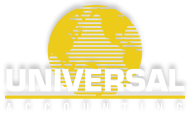Take Steps to Prevent Injuries Cause by Repetitive Movements
Accountants generally spend the majority of their day at a desk, working on their computers. While you may not expect white-collar workers to experience any serious work-related injuries, the repetitive movements required by a computer can cause any number of symptoms and/or injuries, including carpal tunnel, tenosynovitis (trigger finger), tennis elbow, and thoractic outlet syndrome (TOS).
Brian Bentow, author of The Computer Athlete’s Handbook, explains that many of these ailments can be prevented when small business owners take the initiative to ensure computer safety. He says, “An ounce of prevention is worth a pound of cure. In more extreme cases, there could be permanent nerve damage. Treatment depends on the type and severity of your injury. [This can range from] rest, physical therapy, massage, and time to medical intervention. It is much simpler and less expensive to avoid and prevent injury than it is to treat it once you, or one of your employees, are injured.”
If you spend more than 5 hours a day on the computer, you are at risk of developing computer-related injuries. In fact, you may already be experiencing symptoms like wrist and elbow pain, tingling in the fingers and forearms, numb and cold fingers, neck, shoulder and back pain, and insomnia. While these symptoms are not conclusive evidence that your ailment is computer-related, it could be a signal that you need to take care in how you approach desk-time.
Bentow’s books focuses on 5 different areas that will enable you to alleviate, and in many cases prevent, these computer-related injuries.
1. Equipment and Usage
Ensure that your working environment is ergonomic, meaning that equipment is designed to provide workers with comfort and safety. Ergonomic chairs, desks and keyboards provide users with the ability to alter the equipment so that it fits their height and size. Your keyboard should be neither too high nor too low, causing unnecessary straining.
2. Self-Awareness and Self-care
Bentow recommends that you listen to your body and notice when you’re uncomfortable or in pain. To prevent injury, one of Bentow’s biggest tips is to keep your body in a neutral position. He explains, “In general, the neutral position for a joint is the most natural position for that joint. It also requires the least amount of effort and is typically the midpoint in the range of that joint. For your wrists the neutral position is straight, in line, and roughly parallel to the floor. For your elbows and knees, it is at a 90-degree angle. When all your individual body parts (head, shoulders, knees, hands, wrists, forearms, back, hips, etc.) are in a neutral position, then you have reached the goal of having your body in a neutral position.”
3. Nutrition
You’re familiar with all these tips, but it’s helpful to recognize that good nutrition can help prevent computer-related injuries as well as ensure good health. Get adequate rest, eat well, and remain hydrated. And while caffeinated beverages may trick you into thinking you have more energy, they really dehydrate your body and prevent proper healing.
4. Strength and Conditioning
Strengthening your muscles will enable you to maintain a good posture, which is paramount in preventing computer-related injuries. Slouching, sitting on your legs, or working from your laptop in bed, all compromise good posture which negatively impacts your spinal alignment. When you exercise regularly, you ensure muscle elasticity and strength which support your physical frame even when working at your computer.
5. Stress Management
Countless studies have shown that emotional health is directly tied to physical health. In fact, stress itself has been named the culprit in numerous illnesses. When you effectively manage your stress, you manage your health. Take the necessary steps to ensure that you acknowledge and release stress before it compounds any sickness or injury in your body.
Final Tip: Bentow warns that “…one of the worst things to do is take anti-inflammatories or pain medication when you’re in pain from using the computer. Taking medication may let you work past your normal pain threshold but that can lead to serious injury or even permanent nerve damage.”
To complement this discussion we’d also like to add this new set of insights in this article titled “15+ Statistics You Need To Know About Home Office Ergonomics”
Taking the necessary precautions to ensure that your computer-time doesn’t turn into sick leave will work to your advantage in the end. Following these five simple tips just might save you from pain, sleep deprivation and nerve damage. It also may help you secure peace of mind and greater prosperity in your business.
QuickBooks Made Profitable
Knowing how to make the most of your accounting software could save you hours of working on the computer. Consider enrolling in Universal Accounting Center’s QuickBooks Specialist program. For next to nothing you can use your QuickBooks expertise in online and desktop versions to attract more clients and increase your bottom line!
80% of small businesses use Intuit’s QuickBooks software. Once you complete the QuickBooks Specialist training, you will be able to use our proven system to attract more clients with your QuickBooks expertise. Not only that, but when you add QuickBooks setup, help and consultation services to your menu, you enhance your financial service offerings and widen your customer appeal.
Take advantage of this marvelous opportunity to increase your bottom line and learn what you can do to run a successful business following the turnkey processes found in the Virtual Bookkeepers Roadmap.
Resources
Lesonsky, Rieva. “Is Your Computer Killing You Softly?” 23 April 2009. The Small Business Blog at allbusiness.com
“The Computer Athlete Central.” http://computerathlete.net/
Share this post: on Twitter on Facebook on Google+




